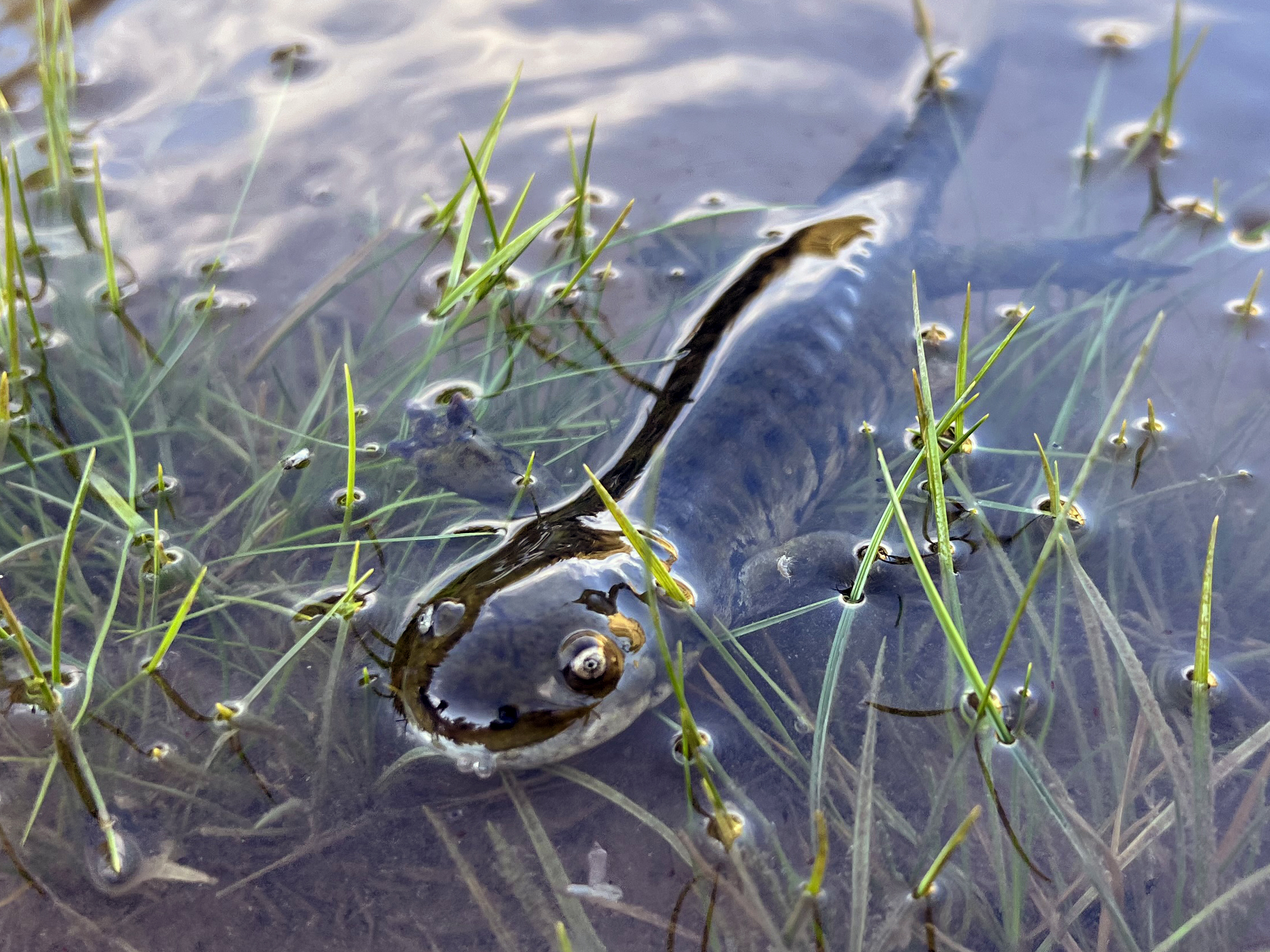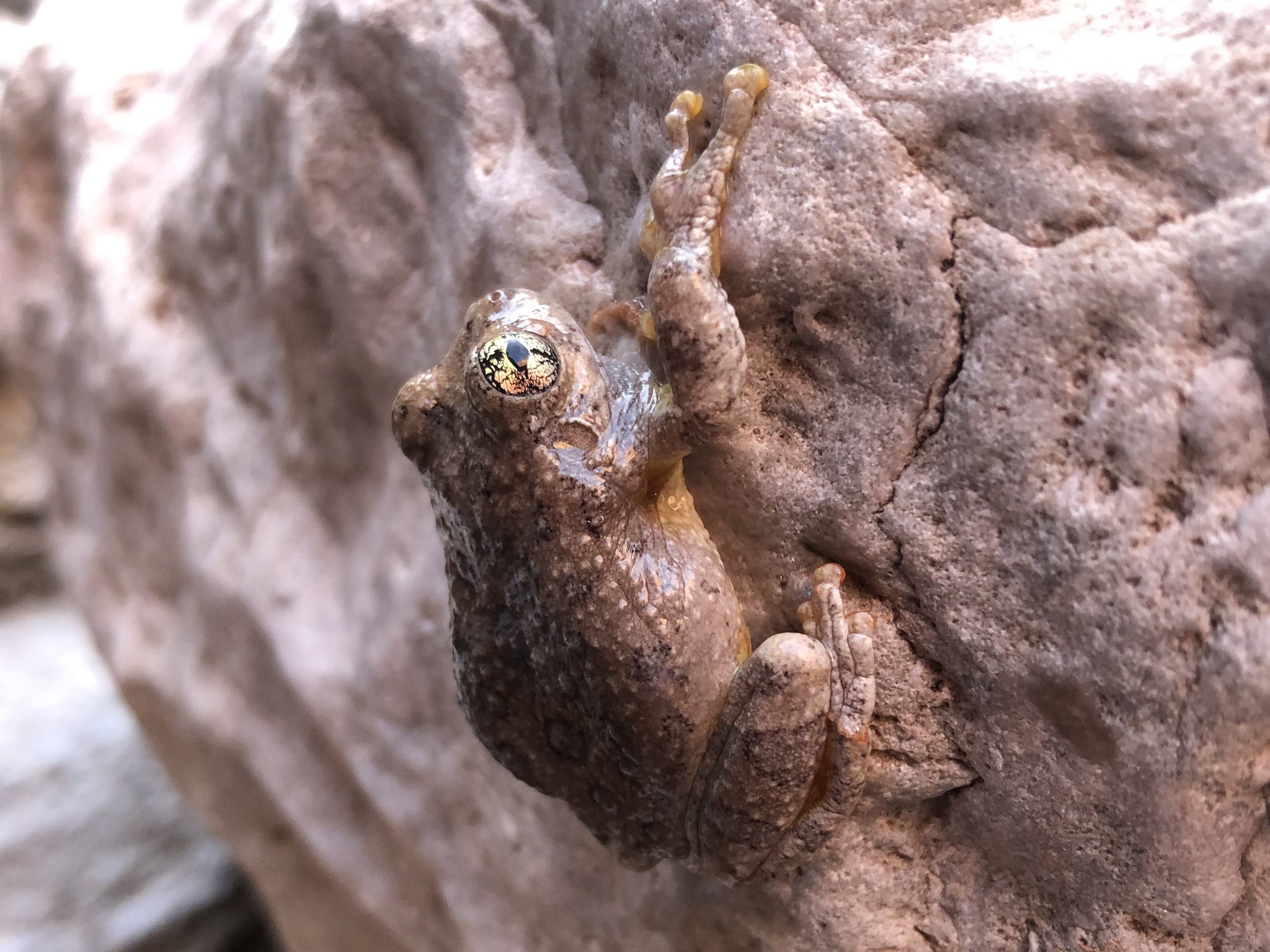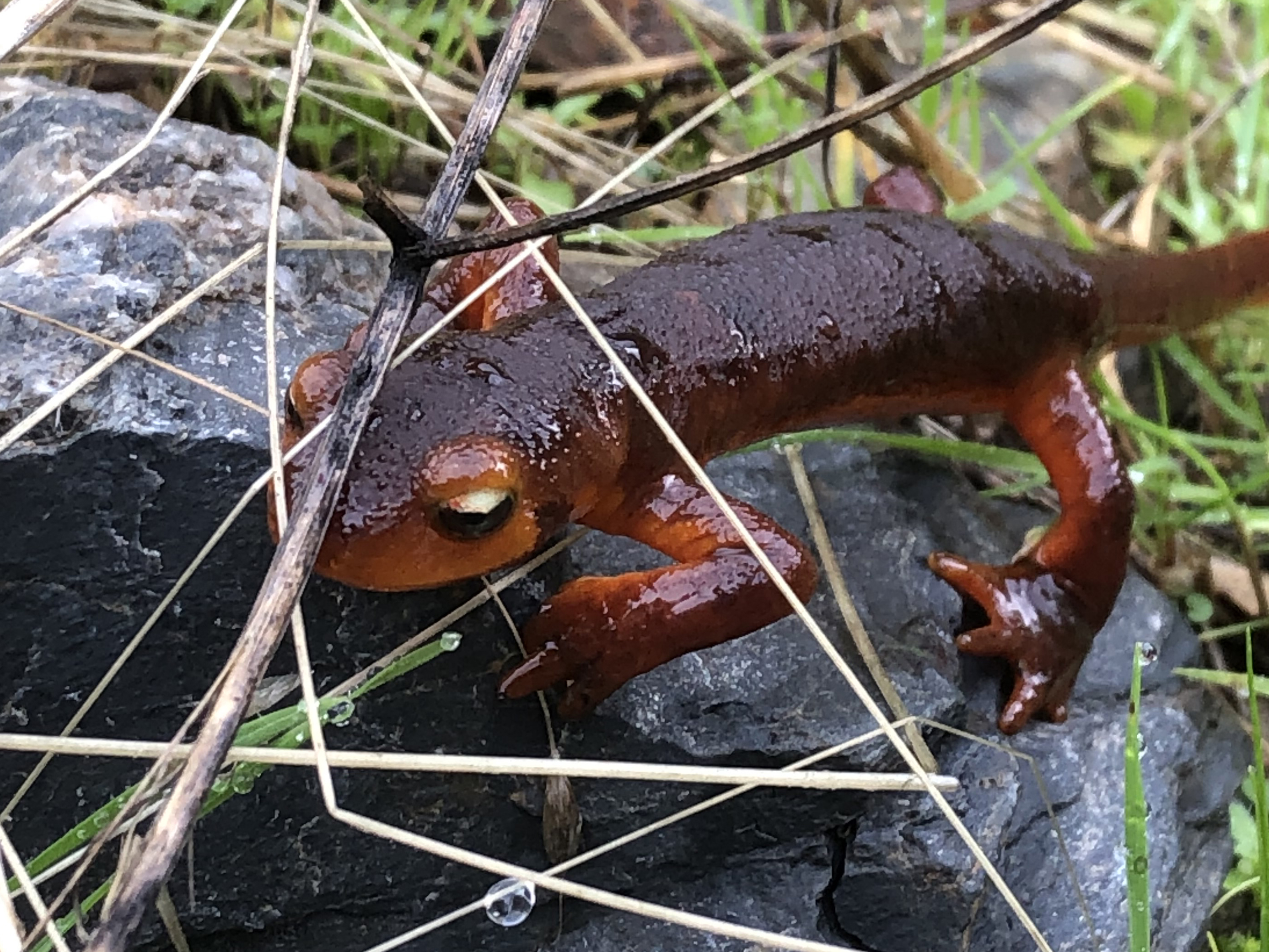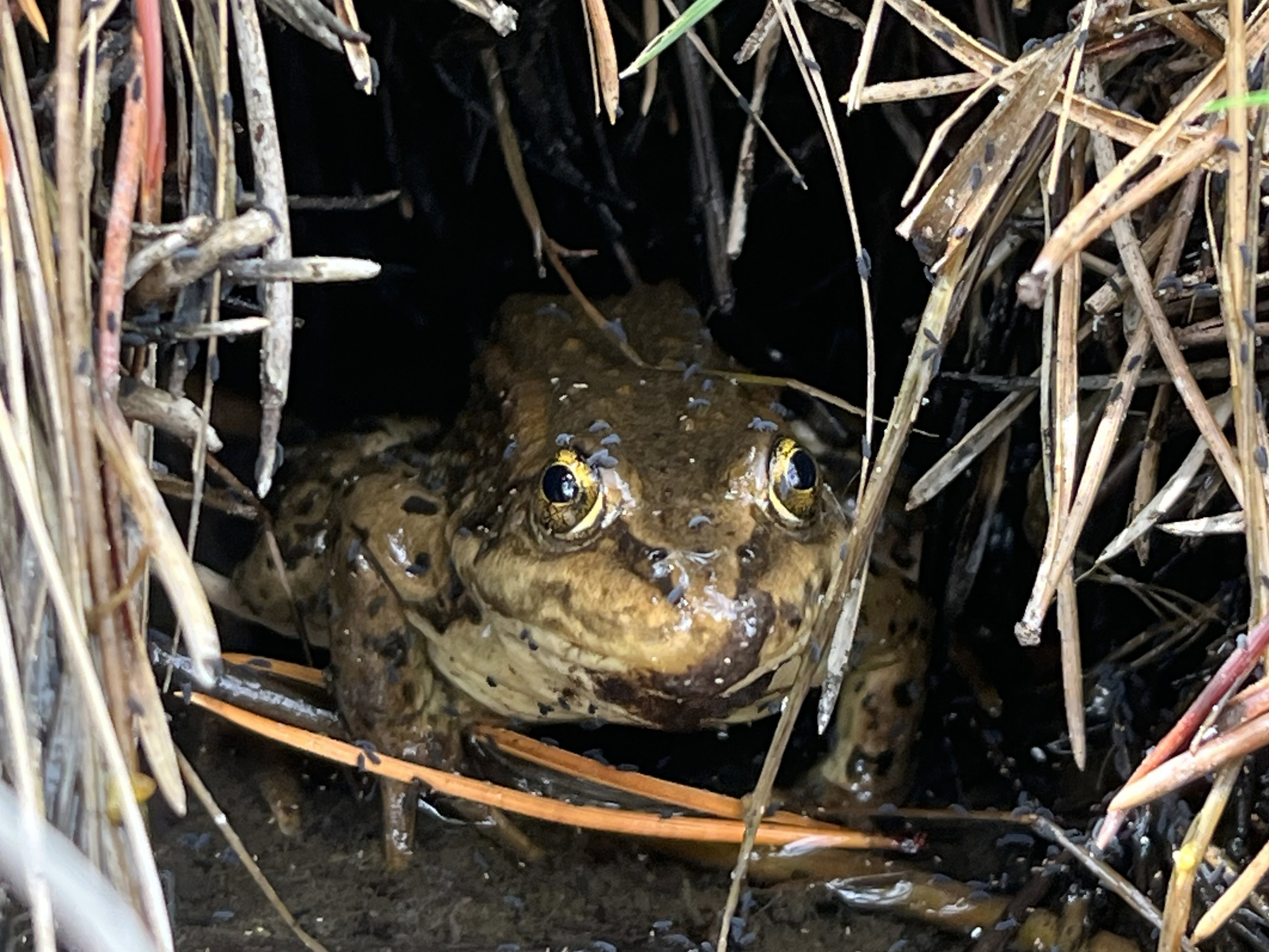Last updated: May 1, 2024
Article
Updated Species Database Will Help Boost Amphibian Conservation Across the National Park Service

Woodhouse's toad, Glen Canyon National Recreation Area.
National Parks are Helping Vulnerable Amphibians
When we think about wildlife in the national parks, frogs might not be the first animal that spring to mind. But frogs and other amphibians are highly sensitive to environmental change, so their presence, their absence, and their abundance tell us a lot about overall ecosystem health.
In a lot of cases, the news is not good. According to the International Union for Conservation of Nature (IUCN), 35% of known amphibian species in North America are described as vulnerable in at least some part of their range. And research has shown that on average, US amphibian populations are declining at a rate of approximately 4% annually. The good news is that National Park Service (NPS) lands support a whopping 65% of amphibian diversity in the US, while only covering about 3.5% of the nation's total area. All of this makes amphibians a high priority for conservation efforts by park managers. A recent project by ecologists from the Inventory & Monitoring Division (I&M) will make that work easier.

Western tiger salamander, Teton Range, Wyoming.
Reliable Data Promote Solid Stewardship
To steward amphibians effectively, managers need basic information about which species live in parks. The main source for species information in the national parks is NPSpecies, the National Park Service’s web-based tool where anyone can go to learn about the occurrence and status of species in the national parks.
But species lists need constant maintenance to remain accurate. So scientists from the NPS I&M division and the US Geological Survey worked with amphibian experts around the US to update the NPSpecies data on amphibian occurrences across the National Park System. Many parks already had a list of amphibian species observed within their borders, but in many cases, the lists had not been updated to incorporate recent observations or changes in taxonomy. To create the updated database, scientists combed through old and new park-level records.

Canyon tree frog, Grand Canyon National Park.
What We Know Now
The NPS now has an up-to-date amphibian species checklist for almost 300 parks. The new dataset contains occurrence records for 292 of the 424 NPS units and includes updated taxonomy, international and state conservation rankings, hyperlinks to a supporting reference for each record, specific notes, and related fields which can be used to better understand and manage amphibian biodiversity within a single park or group of parks.
A total of 230 amphibian species were noted as present in national parks. This represents 65% of the 354 species present in the US. Parks in the Southeast and Northeast (where salamander species outnumber species of frogs and toads) had more species than those in the western two-thirds of the country. In total, 40 species of frogs and toads and 96 species of salamanders were documented in the Southeast. The Blue Ridge Parkway, a 470-mile corridor extending along the spine of the Blue Ridge Mountains from Shenandoah National Park to Great Smoky Mountains National Park, has 46 amphibian species documented (5 others listed as possibly present and 2 as adjacent) representing 5 families of salamanders and 19 species from the genus Desmognathus alone. In contrast, Yellowstone National Park—at 3,468 mi2, one of the largest in the continental US—has just 5 species. Parks in the southwest had the greatest fraction (~25%) of species considered at-risk: classified as near threatened, vulnerable, or endangered.

Sierra newt, Yosemite National Park.
How is this Information Being Used?
Conserving at-risk wildlife, including amphibians, is an uphill battle. But with an updated list of amphibians in parks, we can begin to characterize how common or rare individual species are, identify their primary threats (e.g., climate change and invasive species) and describe the conservation benefits of protecting additional habitat inside or outside park boundaries. This information can mean the difference between taking conservation actions for at-risk species versus overlooking their needs. For example, parks undertaking management actions that affect wetlands need to know which species are present in those areas—and can use this list. Parks preparing to perform eDNA or other inventories can use the database to identify target species. And more broadly, knowing which species are in a park is the first step to identifying climate vulnerabilities. This work also serves as a model for other scientists seeking to improve the information available on other taxonomic groups in the national parks. Conservation efforts require up-to-date, place-based knowledge. With this effort, the NPS is modeling what that looks like for efforts to support amphibian biodiversity.

Columbia spotted frog, Yellowstone National Park.
For more information on this project, read A Dataset of Amphibian Species in US National Parks, by B.J. LaFrance, A.M. Ray, R.N. Fisher, and others. Scientific Data (11)32 (2024). https://doi.org/10.1038/s41597-023-02836-2.
Tags
- abraham lincoln birthplace national historical park
- acadia national park
- agate fossil beds national monument
- alibates flint quarries national monument
- allegheny portage railroad national historic site
- american memorial park
- amistad national recreation area
- anacostia park
- aniakchak national monument & preserve
- antietam national battlefield
- apostle islands national lakeshore
- appalachian national scenic trail
- appomattox court house national historical park
- arches national park
- arkansas post national memorial
- assateague island national seashore
- aztec ruins national monument
- badlands national park
- bandelier national monument
- bent's old fort national historic site
- big bend national park
- big cypress national preserve
- big hole national battlefield
- big south fork national river & recreation area
- big thicket national preserve
- bighorn canyon national recreation area
- biscayne national park
- black canyon of the gunnison national park
- blackstone river valley national historical park
- blue ridge parkway
- bluestone national scenic river
- booker t washington national monument
- bryce canyon national park
- buffalo national river
- cabrillo national monument
- canaveral national seashore
- cane river creole national historical park
- canyon de chelly national monument
- canyonlands national park
- cape cod national seashore
- cape hatteras national seashore
- cape lookout national seashore
- capitol reef national park
- capulin volcano national monument
- carl sandburg home national historic site
- carlsbad caverns national park
- casa grande ruins national monument
- catoctin mountain park
- cedar breaks national monument
- chaco culture national historical park
- channel islands national park
- charles pinckney national historic site
- chattahoochee river national recreation area
- chesapeake & ohio canal national historical park
- chickamauga & chattanooga national military park
- chickasaw national recreation area
- chiricahua national monument
- city of rocks national reserve
- colonial national historical park
- colorado national monument
- congaree national park
- coronado national memorial
- cowpens national battlefield
- crater lake national park
- craters of the moon national monument & preserve
- cumberland gap national historical park
- cumberland island national seashore
- curecanti national recreation area
- cuyahoga valley national park
- death valley national park
- delaware water gap national recreation area
- denali national park & preserve
- devils postpile national monument
- devils tower national monument
- dinosaur national monument
- ebey's landing national historical reserve
- effigy mounds national monument
- eisenhower national historic site
- el malpais national monument
- el morro national monument
- eleanor roosevelt national historic site
- eugene o'neill national historic site
- everglades national park
- fire island national seashore
- florissant fossil beds national monument
- fort bowie national historic site
- fort caroline national memorial
- fort davis national historic site
- fort donelson national battlefield
- fort frederica national monument
- fort laramie national historic site
- fort larned national historic site
- fort matanzas national monument
- fort necessity national battlefield
- fort pulaski national monument
- fort raleigh national historic site
- fort sumter and fort moultrie national historical park
- fort union national monument
- fort union trading post national historic site
- fort vancouver national historic site
- fort washington park
- fossil butte national monument
- fredericksburg & spotsylvania national military park
- friendship hill national historic site
- gates of the arctic national park & preserve
- gateway arch national park
- gauley river national recreation area
- george washington memorial parkway
- george washington birthplace national monument
- george washington carver national monument
- gettysburg national military park
- gila cliff dwellings national monument
- glacier national park
- glacier bay national park & preserve
- glen canyon national recreation area
- golden gate national recreation area
- golden spike national historical park
- grand canyon national park
- grand canyon-parashant national monument
- grand portage national monument
- grand teton national park
- grant-kohrs ranch national historic site
- great basin national park
- great falls park
- great sand dunes national park & preserve
- great smoky mountains national park
- greenbelt park
- guadalupe mountains national park
- guilford courthouse national military park
- gulf islands national seashore
- hagerman fossil beds national monument
- haleakalā national park
- harmony hall
- harpers ferry national historical park
- hawaiʻi volcanoes national park
- herbert hoover national historic site
- home of franklin d roosevelt national historic site
- homestead national historical park
- amphibians
- frogs
- toads
- salamanders
- management tools
- science
- research
- ncbn
- ncpn
- netn
- northeast temperate network
- ngpn
- pacn
- romn
- scpn
- sean
- secn
- sfan
- sfcn
- sien
- sodn
- sopn
- southwest alaska network
- ucbn
- northern colorado plateau network
